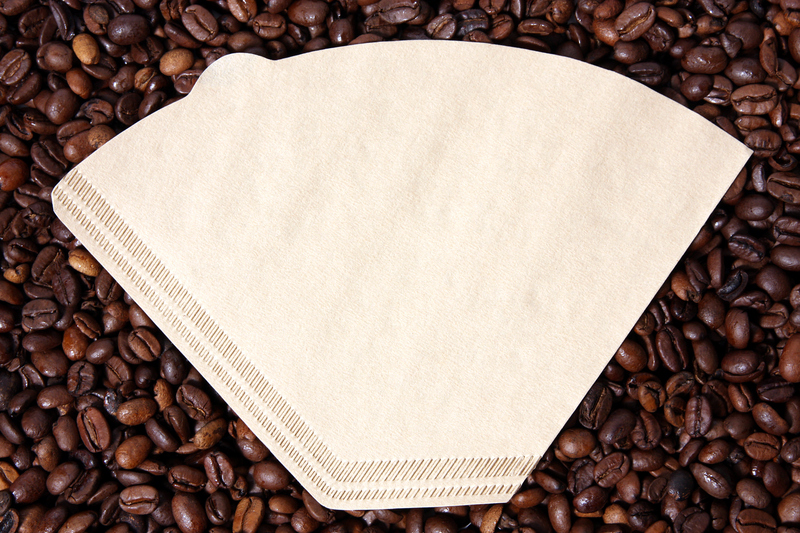Transform Your Window Sills: Mould Cleaning Strategies
Posted on 06/09/2025
Transform Your Window Sills: Mould Cleaning Strategies
Unlock a healthier, more beautiful home by tackling a menace that often goes unnoticed: mould on window sills. Whether you're a homeowner, renter, or property manager, discovering black mould or mildew stains near your windows can feel daunting. However, with the right mould cleaning strategies, you can remove unsightly stains, restore indoor air quality, and prevent future infestations. This comprehensive guide offers expert advice and actionable steps to transform your window sills, ensuring a fresh and healthy home environment.

Why Does Mould Grow on Window Sills?
Before launching into mould removal strategies, it's vital to understand why window sill mould is such a common household problem. Mould thrives in areas with excess moisture, warmth, and organic material. Window sills, especially those in bathrooms, kitchens, and poorly ventilated rooms, often meet all three requirements:
- Condensation: Water droplets naturally collect where warm, humid indoor air meets cold windows, creating a perfect environment for mould spores.
- Poor Ventilation: Lack of fresh airflow around window areas traps humidity, which further encourages mould growth.
- Dirt and Debris: Dust and organic matter on sills feed mould colonies, helping them spread quickly.
Identifying the root causes of mould on your window sills helps you choose the most effective cleaning and prevention strategies.
Health Risks Associated with Mouldy Window Sills
You might be tempted to ignore a mouldy window sill, but doing so could impact your health. Mould releases spores and mycotoxins, which are linked to respiratory illnesses, allergic reactions, and skin irritation. Vulnerable groups--like children, seniors, and people with asthma or weakened immune systems--are at increased risk. By addressing mould problems on window sills, you're not only improving aesthetics but also protecting your household from health hazards.
DIY Mould Removal: Step-by-Step Strategies
Learning the best mould cleaning strategies for window sills empowers you to tackle the problem with confidence. Here is a comprehensive step-by-step guide:
Step 1: Gather Essential Cleaning Supplies
- Protective gloves and a mask
- Safety glasses
- Old towels or drop cloths
- Scrubbing brush or sponge
- Spray bottle
- Cleaning solution (see recipe below)
- Microfiber cloths
Step 2: Make a Safe and Effective Cleaning Solution
You can purchase specialized mould cleaners for window sills, but several household products are also very effective:
- Vinegar: Mix 1 part white vinegar with 1 part water in a spray bottle for a natural, non-toxic solution.
- Baking Soda Paste: Combine 1 tablespoon of baking soda with a little water to form a paste for extra scrubbing power.
- Hydrogen Peroxide: Use 3% hydrogen peroxide in a spray bottle for stubborn mould patches.
- Bleach (with caution): Bleach removes staining on non-porous surfaces but should be used sparingly and never mixed with other cleaners.
Note: Test your chosen solution on a small, inconspicuous area before applying extensively, especially for painted or wooden window sills.
Step 3: Clean the Window Sills Thoroughly
- Put on gloves, mask, and safety glasses before starting.
- Lay down towels to protect floors and catch debris.
- Open the window for ventilation.
- Spray the mouldy area generously with your cleaning solution.
- Allow it to sit for 10-15 minutes so the mould loosens.
- Use your brush or sponge to scrub the area, paying attention to corners and seams.
- Wipe the area with a clean, damp microfiber cloth.
- Repeat the process if stubborn stains persist.
For wooden sills, avoid over-saturating the material, as excess moisture can lead to further mould. For painted or PVC window sills, a gentle approach will prevent scratches and discoloration.
Step 4: Dry Completely and Dispose of Contaminated Materials
- Use a dry cloth to remove residual moisture.
- Dispose of used sponges and towels safely.
- Keep the window open or use a fan to expedite drying.
Tip: Never underestimate the importance of complete drying; lingering moisture creates the perfect breeding ground for future mould outbreaks.
Mould Prevention: Long-Term Strategies for Cleaner Window Sills
Once your window sills are sparkling clean, implement these prevention strategies to keep mould at bay permanently:
- Control Indoor Humidity: Aim for 30-50% relative humidity using dehumidifiers or air conditioners, especially in high-risk areas.
- Boost Ventilation: Regularly open windows and use extractor fans in bathrooms and kitchens.
- Wipe Down Condensation: Each morning, quickly dry away any water droplets that have formed overnight.
- Regular Cleaning: Dust and clean window sills weekly to deprive mould spores of food.
- Check for Leaks: Repair any window frame leaks or caulking gaps to prevent water infiltration.
- Seal Wooden Sills: Periodically apply a waterproof sealant to wooden window sills to block moisture absorption.
Natural vs. Chemical Mould Removers: Which Should You Choose?
With so many mould cleaners for window sills readily available, it's worth understanding the pros and cons of each type:
Natural Mould Removal Solutions
- Vinegar: Safe and eco-friendly but may require repeated applications for tough spots.
- Baking Soda: Excellent gentle abrasive, has natural deodorising properties, and is safe for children and pets.
- Hydrogen Peroxide: More powerful than vinegar, kills mould spores on contact, but can bleach dark-painted sills.
Chemical Mould Removers
- Bleach: Quick and effective for surface cleaning, but can be harsh and is not recommended for porous materials like wood or MDF.
- Commercial Fungicides: Specifically formulated to kill mould and prevent regrowth but may emit strong fumes--always follow label directions and ventilate adequately.
The best approach is often to start with gentler, natural solutions, reserving chemicals for persistent or dangerous mould outbreaks. Never mix acidic solutions (like vinegar) with bleach to avoid toxic fumes.
Frequently Asked Questions About Window Sill Mould Cleaning
Can I Use Household Detergents to Clean Mould?
Simple detergents can help remove mould but may not kill spores. For the best results, follow detergent cleaning with a mould-specific solution like vinegar or hydrogen peroxide to fully disinfect.
Is Mould on Window Sills Dangerous?
While small patches may not pose immediate dangers, ongoing exposure to mould spores--especially black mould--can trigger allergies, worsen asthma, and cause respiratory or skin issues. Prompt, effective cleaning is always recommended.
How Often Should Window Sills Be Checked for Mould?
Inspect window sills at least once a month, or more frequently in damp climates or homes with chronic condensation. Early action prevents costly damage and widespread growth.
What About Mould in Hard-to-Reach Areas?
Use a soft-bristled toothbrush or a cotton swab dipped in cleaning solution for tight window frame corners or crevices. Persistent, hidden mould may require professional attention.
Should I Replace the Sill if the Mould Keeps Returning?
If repeated cleaning and prevention strategies fail, the underlying problem may involve water leaks, failing insulation, or rot. In such cases, replacing the affected window sill with a new, sealed unit is recommended. Consult a contractor if unsure.
Professional vs. DIY Window Sill Mould Removal
While most window sill mould cleaning jobs are suitable for DIY remedies, certain situations call for expert intervention:
- Mould covers over 1 square metre/10 square feet.
- You experience persistent health issues linked to mould.
- The mould has penetrated beneath paint layers or deep into wood.
- There is evidence of structural damp or widespread rot.
Professional mould remediation specialists use commercial-grade fungicides, advanced drying equipment, and diagnostic tools to remedy chronic infestations safely. For severe cases, seeking their help assures complete protection and peace of mind.
Window Sill Mould on Different Surfaces: Tailoring Your Approach
- Wooden Window Sills: Avoid soaking; use a slightly damp cloth and allow to dry completely. Consider light sanding before resealing for deep-rooted stains.
- Plastic or PVC Sills: These are non-porous and easily cleaned with most solutions, but avoid abrasives to prevent scratches.
- Painted Window Sills: Use non-abrasive methods and always test a small area first to safeguard the finish.
- Stone or Marble Sills: Stick with natural cleaning agents; harsh chemicals may etch delicate stonework.

Maintain & Enjoy: Long-Term Window Sill Transformation Tips
Achieving clean, mould-free window sills isn't just about a one-time deep clean--it's about establishing a routine that keeps your home healthy and inviting all year round. Here's how:
- Monthly Cleaning: Build quick window sill wipe-downs into your monthly schedule to reduce build-up.
- Seasonal Inspections: Inspect caulking, weatherstripping, and seals during biannual home maintenance to keep moisture out.
- Decorative Touches: After cleaning, add indoor plants (that don't require overwatering) or tasteful decor for a fresh look.
- Educate Household Members: Teach everyone the signs of window sill mould and humidity control best practices.
With these straightforward habits, your window sills will remain mould-free, vibrant, and an asset to your living space for years to come.
Conclusion: A Healthier, Brighter Home Starts Here
*In summary*, the path to transforming your window sills with effective mould cleaning strategies involves:
- Recognizing the causes and risks of window sill mould.
- Applying proven, safe cleaning techniques suited to your sill material.
- Preventing recurrence with smart moisture and ventilation controls.
- Seeking professional help when mould problems exceed DIY solutions.
Take action today! By following these in-depth strategies, you'll protect your health, enhance your windows' appearance, and once again enjoy fresh air and sparkling views every day. Your window sills, once an eyesore, will become gleaming features of your beautiful, clean, and mould-free home.
For more expert home cleaning tips, maintenance advice, and the latest on healthy living, follow our blog and stay ahead of every household challenge!




